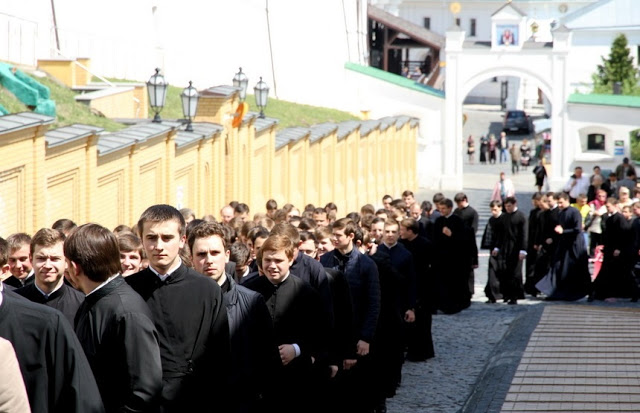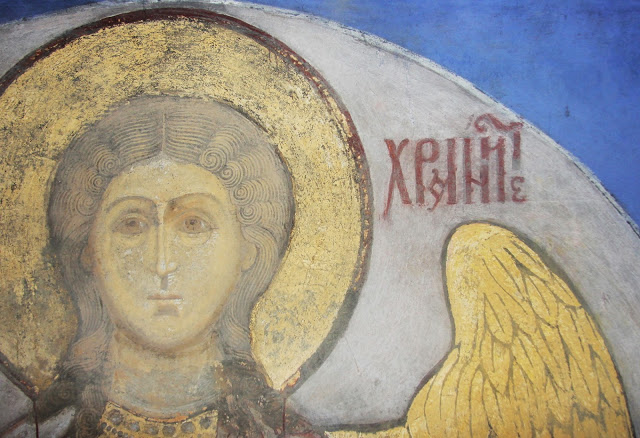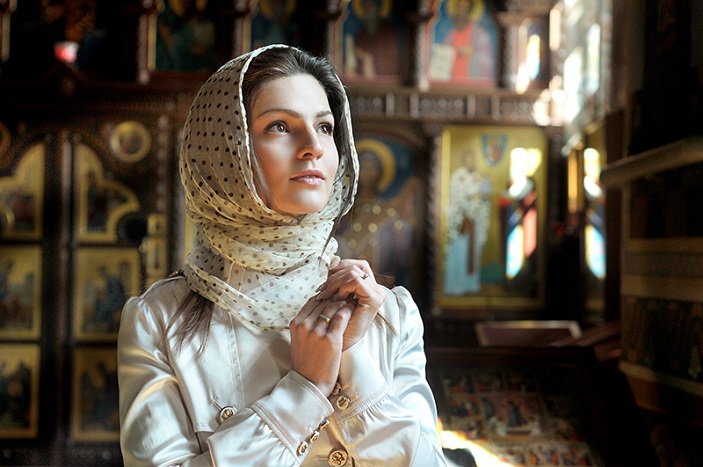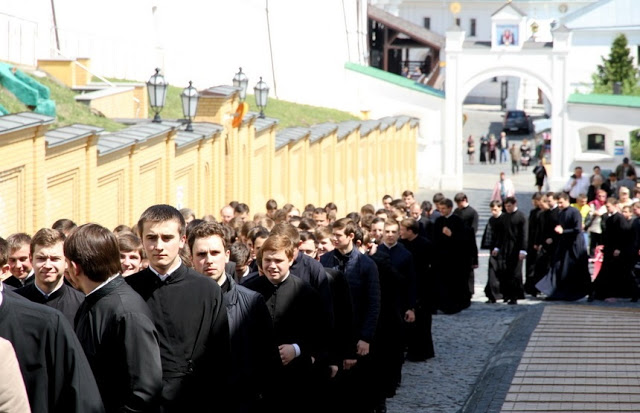
Question: Why do seminarians wear the cassock?
Answer: Seminaries are a relatively recent thing in Church history. The first seminaries were established in the wake of the Roman Catholic Counter-Reformation in the 16th century, and were only later adopted as a model by both Orthodox and Protestants.
The first Orthodox Seminary was the Kiev Theological Academy, which was founded in 1615, on the grounds of the Theophany Monastery. Perhaps because of this historical
connection of Orthodox seminaries with monasteries the practice is for Orthodox Seminarians to wear a cassock and a monastic belt, just as would a novice monastic.
connection of Orthodox seminaries with monasteries the practice is for Orthodox Seminarians to wear a cassock and a monastic belt, just as would a novice monastic.
The Holy Trinity Seminary Student Handbook says the following about the wearing of a cassock by seminarians:
“Being a theological school, Holy Trinity Orthodox Seminary is guided in its activities by canon law. In accordance with the canons and decisions of the Orthodox Church, all inhabitants of the monastery are obligated to be in obedience to the Abbot.
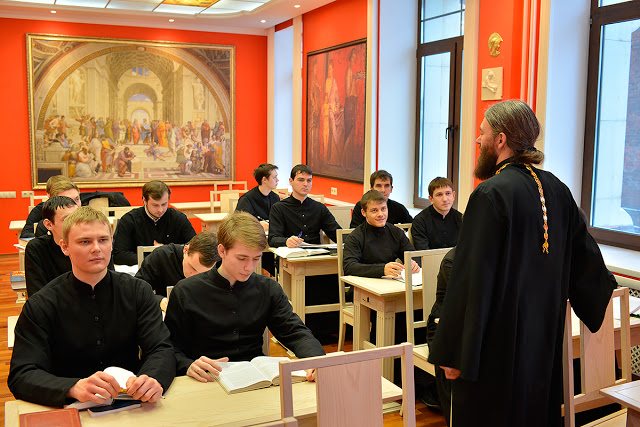
Students enter the theological seminary wearing cassocks and belts like novices in the monastery but with a specially modified regime. Therefore they are obliged to submit to the seminary and monastery authorities according to the dictates of their consciences and Christian obedience which call for humility and respect for spiritual superiors. Students must be clearly aware of these things and must consider beforehand whether they are really inspired by an Orthodox Christian attitude, and whether it makes sense for them to study in the Seminary under such conditions.”
Most seminaries are still connected with monasteries, and participation in the liturgical life of the monastery is one of the more important aspects of an Orthodox seminary education.
Bishop Irenei (Steenberg) had the following observations regarding the traditions of wearing a cassock (podryasnik) and an outer cassock (ryasa), in a discussion on his Monachos.net website: “The normal custom vis-a-vis cassocks varies between the Byzantine and Russian traditions.
In general terms, and largely common to both traditions, the inner cassock (in Russian the подрясник) is to be worn by all persons in tonsure – that is, by all those of the higher orders of the clergy (bishops, priests, deacons), all those of the lesser orders (subdeacons and readers), as well as by monastics, and often (though not always) by seminarians. It is fundamentally a sign both of the obedience of the tonsure (in the cases of all but seminarians), and of self-effacement. In proper terms, no person in any of these categories should be in the church without being attired properly in the подрясник.
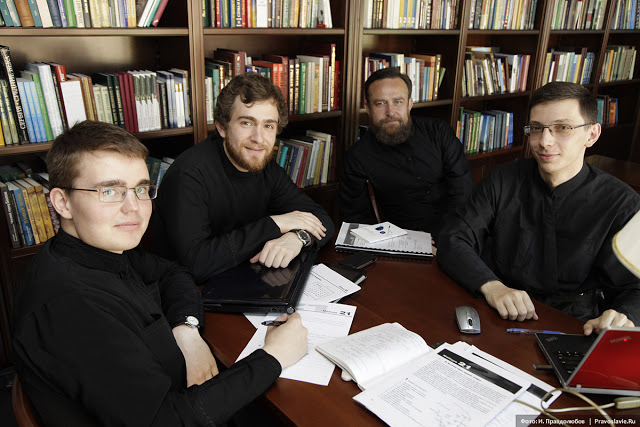
Practices regarding the outer cassock, the ряса, vary by tradition:
In the Russian tradition, it is the more formal outer garment of bishops, priests, deacons and monastics (of the rank of ryassophor, named specifically for the wearing of this garment, which is in origin monastic), worn over (not instead of) the cassock. The ряса is not normally worn by subdeacons or readers, and never by seminarians. In normal Russian practice, one receives a blessing to wear the ряса either on ordination to the diaconate, or when advancing in the monastic life.
In the Byzantine tradition, the same general practice often applies; however, it is common for readers to wear this outer garment when reading in church (usually without the cassock beneath, unique to Byzantine practice) – and in some cases others also will wear the ryassa in the same manner (choir directors, etc).”

